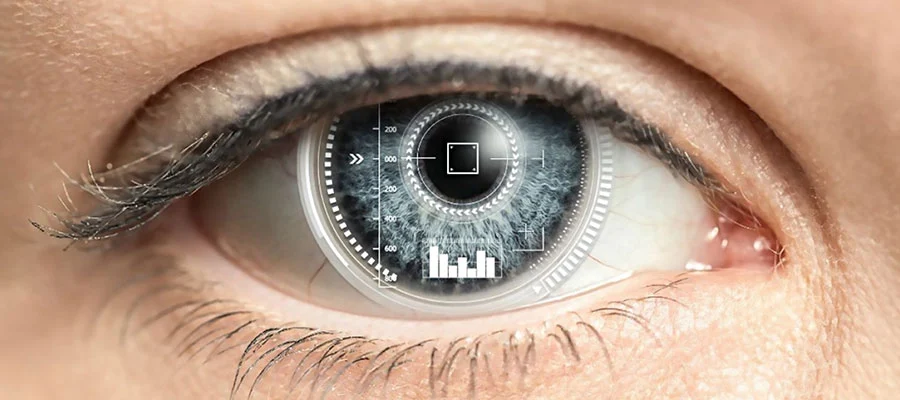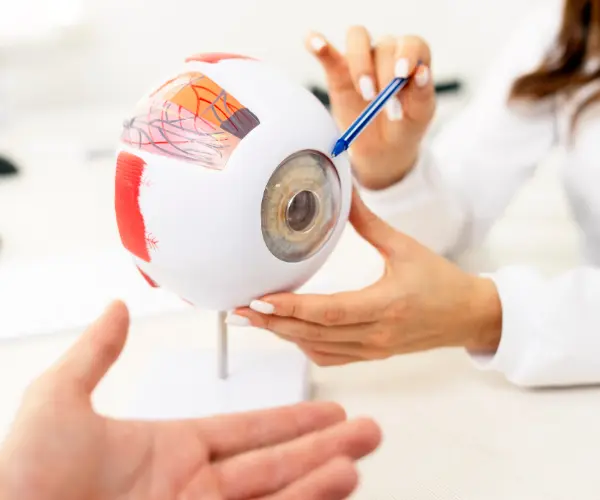Would you like to leave your glasses behind and enjoy sharp vision for near, intermediate, and far distances — all with a single solution? Trifocal smart lenses are an innovative technology designed exactly for this need. These advanced intraocular lenses not only correct refractive errors but also enhance your quality of life thanks to their multi-focal structure. If you struggle with reading books, focusing on a computer, or seeing distant signs clearly — this article is for you! Here you’ll find clear, detailed answers to everything you need to know about trifocal lenses.
What Is a Trifocal Smart Lens?
A trifocal smart lens is an artificial intraocular lens implanted into the eye that provides clear vision at near, intermediate, and far distances. Developed as an evolution of multifocal lenses, this technology is ideal for people who read frequently, work at a desk, or drive regularly. Trifocal lenses can also be used during cataract surgery and provide permanent correction for refractive errors such as myopia, hyperopia, and astigmatism.
Who Is a Trifocal Lens Suitable For?
-
Individuals over 40 (especially those with presbyopia)
-
People who no longer want to rely on glasses or contact lenses
-
Patients with cataracts
-
Those who need clear vision for reading, computer use, and distance
-
Individuals who are not suitable candidates for LASIK or other laser surgeries
Who Is Not Suitable for a Trifocal Lens?
-
People with retinal diseases (e.g., age-related macular degeneration)
-
Patients with glaucoma — requires thorough evaluation
-
Individuals with severe dry eye disease
-
People under 20 or with unstable vision prescription
How Is Trifocal Smart Lens Surgery Performed?
Trifocal lens implantation is typically performed using the same technique as cataract surgery.
Step-by-step process:
-
Examination: A detailed assessment of the eye structure and lens suitability
-
Anesthesia: Local anesthesia is applied with eye drops — no pain is felt
-
Lens removal: The natural lens is removed using ultrasound (phacoemulsification method)
-
Lens implantation: The trifocal lens is securely placed inside the eye
The procedure takes about 15–20 minutes, and patients can go home the same day. Vision generally sharpens within 1–2 weeks.
Advantages of Trifocal Smart Lens Surgery
-
Clear vision at all three distances: near, intermediate (e.g., computer), and far
-
Permanent freedom from glasses or contact lenses
-
Eliminates the risk of developing cataracts
-
High-quality night vision
-
Painless procedure with fast recovery time
Post-Surgery Care Tips for Trifocal Lenses
-
Do not rub your eyes for the first 24 hours
-
Use the prescribed eye drops regularly
-
Avoid intense physical activity for one week
-
Refrain from swimming or using hot tubs for two weeks
-
Protect your eyes from UV light with sunglasses when outdoors
Is the Trifocal Lens a Permanent Solution?
Yes! Trifocal smart lenses are designed to last a lifetime. Once implanted, they do not need to be replaced. In some cases, the lens capsule may become cloudy over time. This can be corrected easily with a simple outpatient laser procedure (YAG laser) to restore clear vision.
Difference Between Trifocal and Multifocal Lenses
| Feature | Trifocal Lens | Multifocal Lens |
|---|---|---|
| Number of Focal Points | 3 (near, intermediate, far) | 2 (near and far) |
| Intermediate Vision Clarity | Sharper and clearer | Sometimes limited |
| Ideal for Desk/Computer Work | Yes | May not provide consistent clarity |
| Technological Advancement | Newer, more advanced | Older generation technology |









